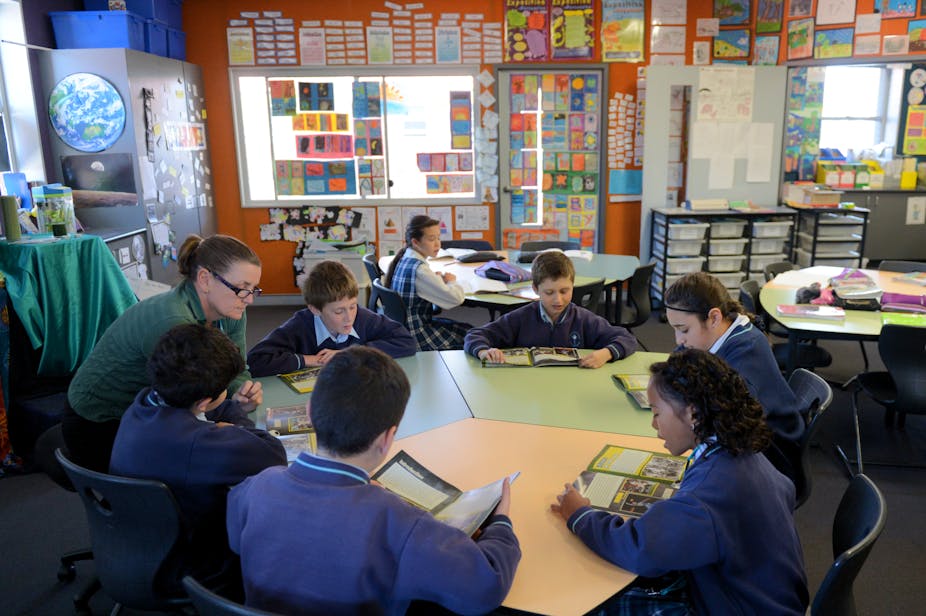Giving parents a choice about where they send their children to school is an important part of the Australian government’s education policy.
The choice is not just private versus public schooling but choice within those types of schooling. Parents can choose from independent schools, Catholic schools, public schools and independent public schools. And in some state systems – such as Queensland – there is no expectation that a parent adheres to the local public school catchment area.
Choice presents a dilemma for parents enrolling their children in school for the first time. It is usually the first major educational transition their children will make.
Research shows most parents would ideally like to send their students to the local state school but are often attracted away by private schools with greater resources and infrastructure – shiny new buildings, sports ovals and equipment.
I am embarking on the enrolment process for my daughter at the moment and I have chosen the local state school. It is a regular, run-of-the-mill, public school down the road from my house. It runs at an average on the My School website, below average on like schools, and it has had a long reputation for being rough. So why have I chosen it?
The local public primary school reflects the local community
I love the idea that my daughter will be able to walk to and from school and there will be one less car in the morning and afternoon line up.
She will also be walking with other children from the local community and come to know their parents and her neighbours as she passes their houses. She will continue to develop the sense of community that has been shown to be directly linked to life satisfaction.
She will also develop links with a community that is multicultural and has multiple family structures. Indigenous issues, NAIDOC Week and Harmony Day may have been removed from the Australian curriculum but the community my daughter grows up in will make it impossible to ignore them.
Her education will teach her that white, middle-class, English-speaking, nuclear families are not the only narrative.
The local public primary school is a symbol of human rights
Education is a basic human right and we are lucky to have good quality education for free in Australia. The best way to support public education is to send your child to a public school.
School funding in Australia is divvied up per student. The logical step in that thinking is that the more children attend the local public school, the more funding the school receives.
My local primary school is located in a refugee community. There are more than 80 different nationalities represented. Refugee children bring with them experiences that no child should ever have had to experience. When war has been a part of a child’s life, schooling them is complex and challenging. But this local public school is an important part of their rehabilitation. I choose to support it.
The local public primary school will help with resilience
I want my daughter to have resilience. There is a lot of pressure on parents to smooth the way for their children but actually removing the bumps does no favours. It is better to train people to jump their hurdles, rather than take them away.
The lack of bells and whistles at the local state school is a bonus for my child. She will face life in a safe and supportive environment and she will learn to deal with it.
The evidence says that in primary school the school sector has little or no effect on scores. If this is so, then choosing a primary school should not be about just what happens in the classroom, but more about what happens in the wider school community.
The time when parents are looking to enrol their children in school for the first time is a good time to think deeply about education. Conversations about education seem to be fixated on how schools are run rather than the experience that leads to an education.
Education is bigger than the facilities or the scores. When deciding whether a school is right for a child, the whole experience of schooling should be considered.
The best way to make the decision is to have a good think about the ideal educational experience a child can have at school and choose the school that best aligns. The best way to deal with the dilemma of choice is to do the research online and offline, but most importantly in the school community.

